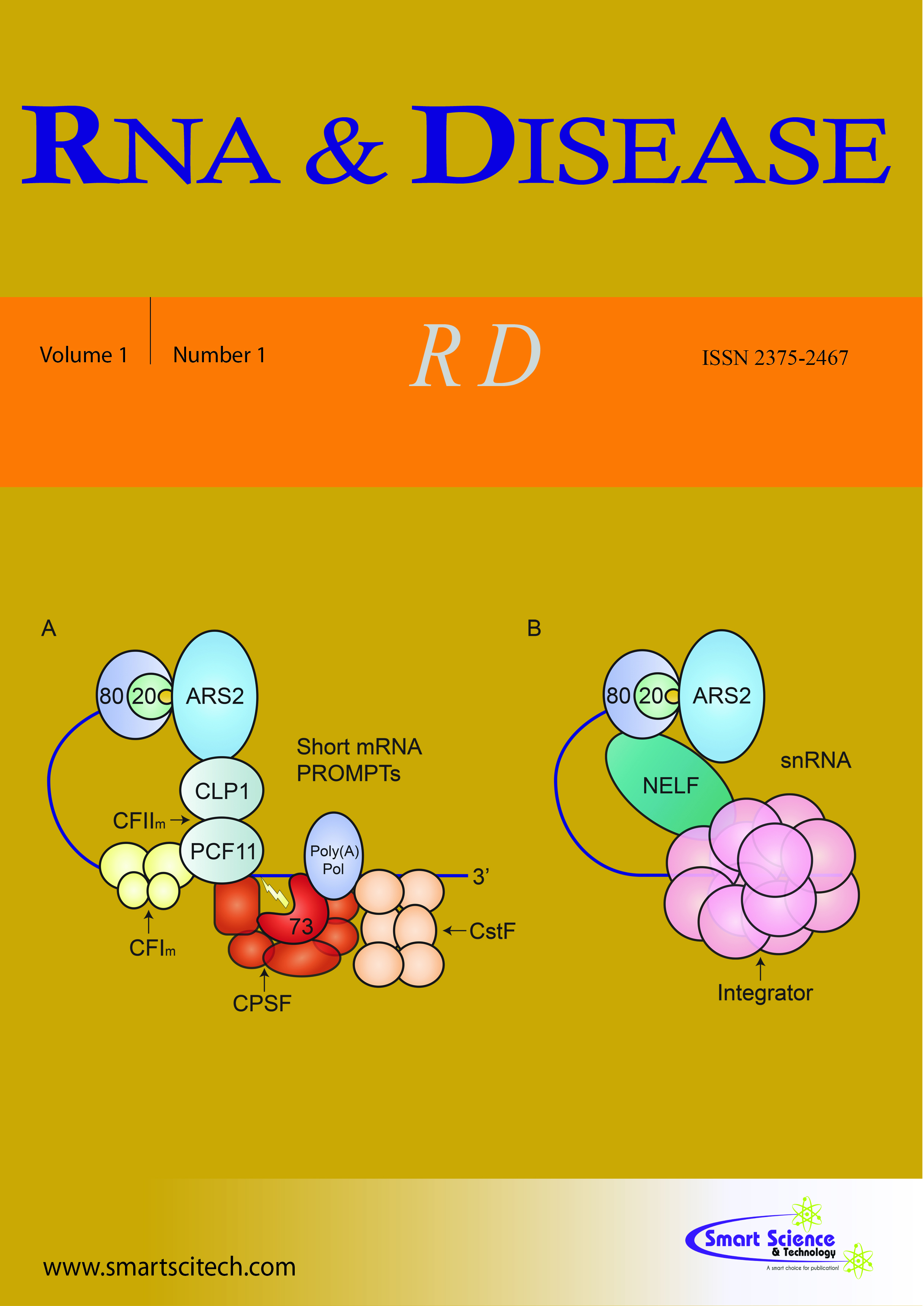Emerging role for PLC?1 MiRNA and disease
DOI: 10.14800/rd.363
Abstract
Nuclear inositides are independently regulated and their regulation is totally independent from the plasma membrane counterpart, suggesting that the nucleus constitutes a functionally distinct compartment of inositol lipids metabolism. This suggests that nuclear inositol lipids themselves can modulate nuclear processes as important as transcription and pre-mRNA splicing, growth, proliferation, cell cycle regulation and differentiation. Phospholipase C ?1 (PLC?1) is a key molecule for nuclear inositide signaling. Very recently it has been highlighted that the role of PLC?1 during erythropoiesis is linked to that of miR-210. Moreover PLC?1 signaling is linked to gene regulation and changes in microRNAs (miRNAs) occurs with PLC?1 expression. Molecular targets of PLC?1 have been found to be important during myogenesis and hematopoiesis. In addition, PLC?1 signaling has been demonstrated to be impaired in diseases affecting both myogenic differentiation and affecting the hematopoietic system.











